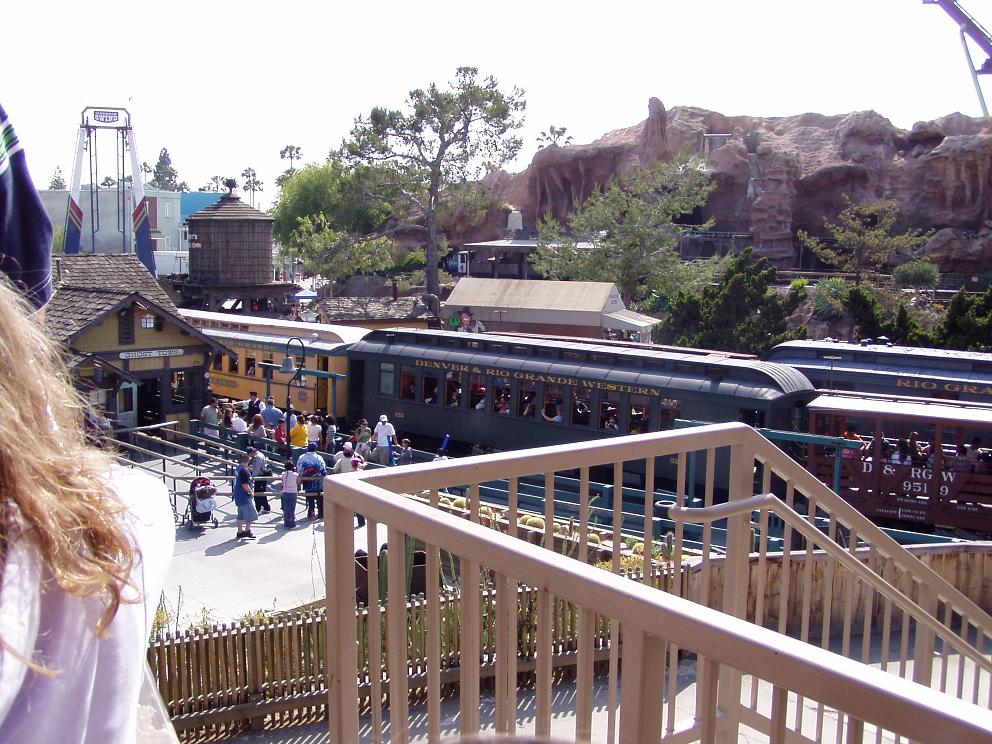In the western states there are a number of scenic railroads known as "heritage railroads" or "excursion railroads." They're not meant to get you from one place to another, they're only meant to show you some amazing scenery for a few hours, and maybe stop somewhere interesting for a while. In Colorado there are three, which I've wanted to ride for years but hadn't found the time, until now, when I finally took the opportunity to experience two of those three.
Planning this trip was somewhat last-minute. I wanted to take some kind of trip for the Memorial Day weekend. I thought about doing New Orleans like last year, I thought about Vegas, I thought about Miami, but it seemed like I didn't have enough Southwest points to fly to any of those places. Every round-trip flight required just a little more points than I had. That's when I remembered there were all these scenic railroads in New Mexico and Colorado I wanted to check out, and this long weekend seemed like the perfect time to do that. That's when I put together this trip and reserved the train rides and hotel rooms.
Saturday, May 25, 2024
I woke up super early in a hotel room in Española, New Mexico, a small city on the Rio Grande a bit north of Santa Fe. My first destination, Chama, was another hour and change to the north.
The Cumbres & Toltec Scenic Railroad runs for 64 miles between Chama, New Mexico and Antonito, Colorado. It's mostly east-west, but the route does so many twists and turns that it crosses the state line 11 times. Because of how long it takes--over seven hours--you can only ride the train in one direction and a bus the other way. You have a choice between where to start--Chama or Antonito--and whether you want to ride the bus first then the train, or train then bus.
My reservation was for bus-then-train starting from Chama at 8:00am. I made it to the Chama station just in time to board the bus, a fairly new motor coach. It took the bus about an hour to drive on the mountain roads to Antonito. After that it would be another hour or so wait until my train back to Chama departed, so I had some time to check out their gift shop and look around a bit.
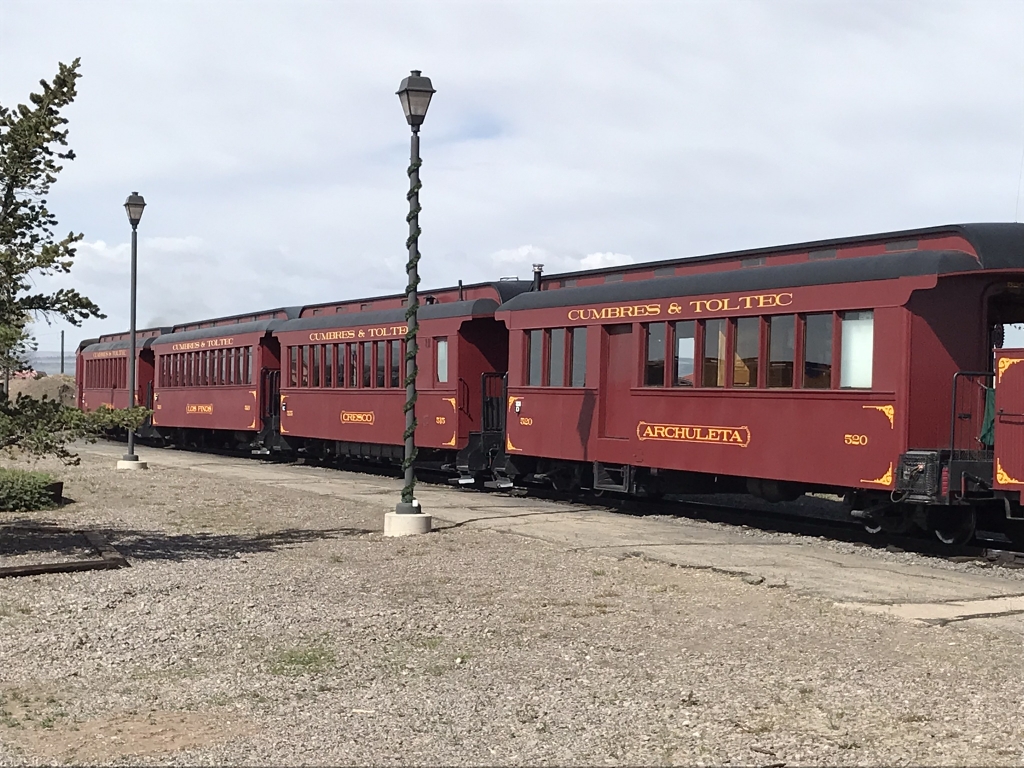
Some of the passenger cars on the train I was about to ride.
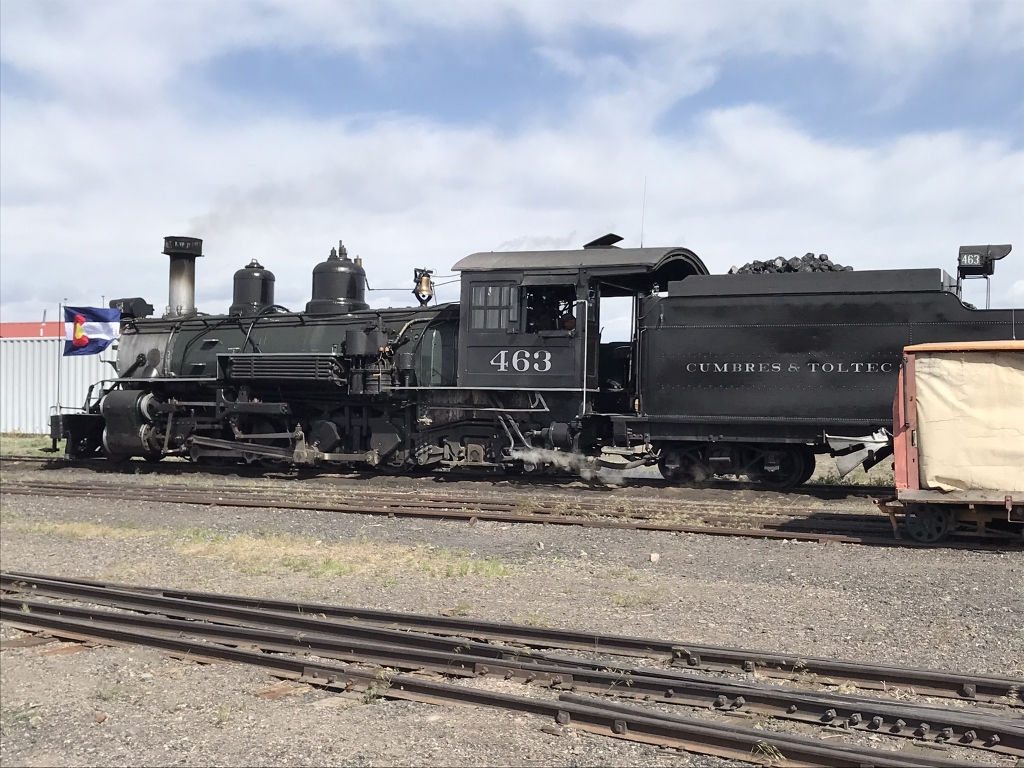
The train's vintage steam engine.
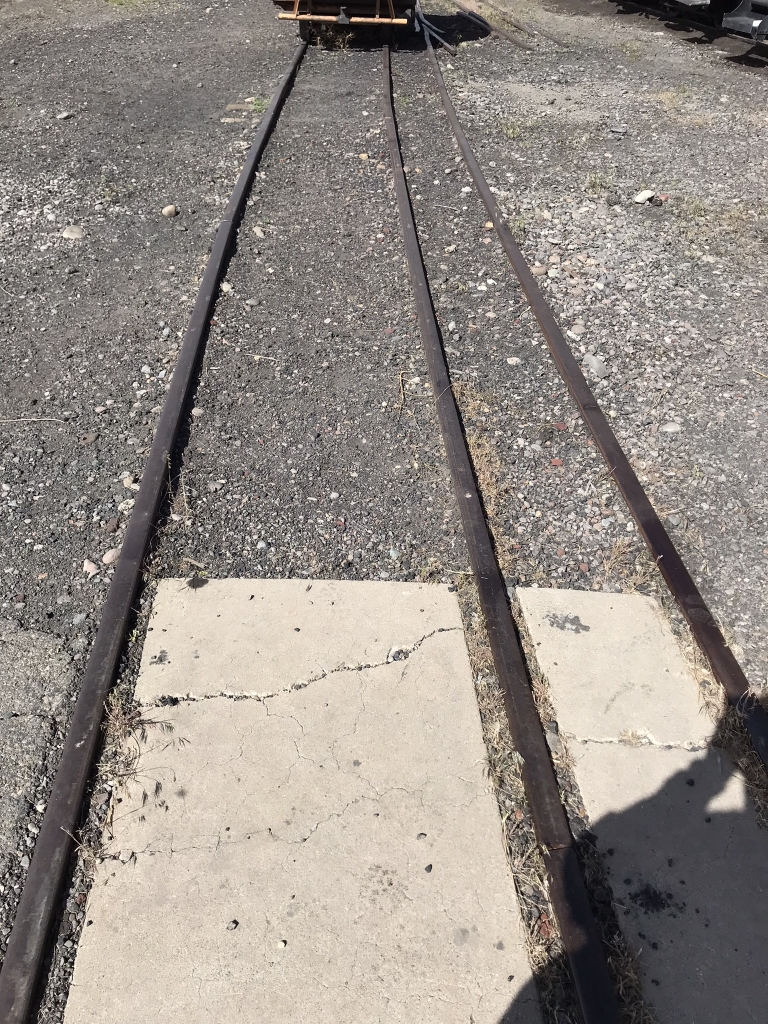
Now we have to look at these tracks. This track will accommodate both standard and narrow gauge. "Gauge" here means how far apart the tracks on a railway are spaced. Most of the world's railways are standard gauge, which is a width of four feet and eight-and-a-half inches. The Cumbres & Toltec is narrow gauge, which means rails spaced three feet apart.
So why is this railway narrow gauge? As I learned from an exhibit later that day, it's because this railway winds its way through the Rocky Mountains. The Denver & Rio Grande Western Railway built a huge network of railways throughout Colorado, New Mexico, and Utah, and the tracks in the mountains were all built narrow gauge in order to make all the sharp curves, which standard gauge couldn't accommodate, through the mountains.
Most of the narrow gauge trackage laid down by the Denver & Rio Grande Western hasn't been in use for nearly a century. Today, the Cumbres & Toltec, as well as the following day's Durango & Silverton, are all that's left.
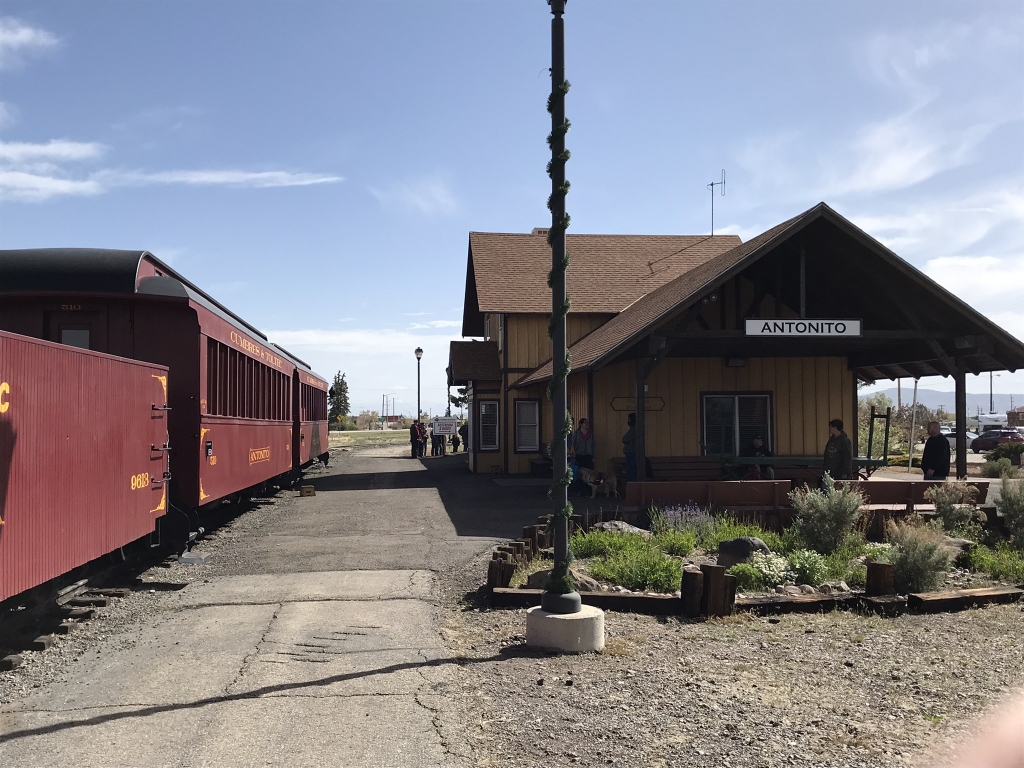
The Antonito station.
In the minutes before the train left, there was some kind of prayer service outside the station for Memorial Day. They was free coffee there and I got myself a cup.
Finally I boarded the train and it took off at 10. The first thing I noticed was the faint smell of gunpowder in the air. Was that due to the engine's burning coal?
Almost immediately after departing, the train broke down. After about ten minutes they got it moving again. Soon after the train started moving, one of the crew members told us that the section of the railway we were passing through was used in the filming of the opening scenes of Indiana Jones and the Last Crusade. Then a brakeman walked through the car and punched everyone's tickets.
Also, on this early part of the trip, there were occasionally people standing near the tracks waving at the train, and we on the train were expected to wave back.
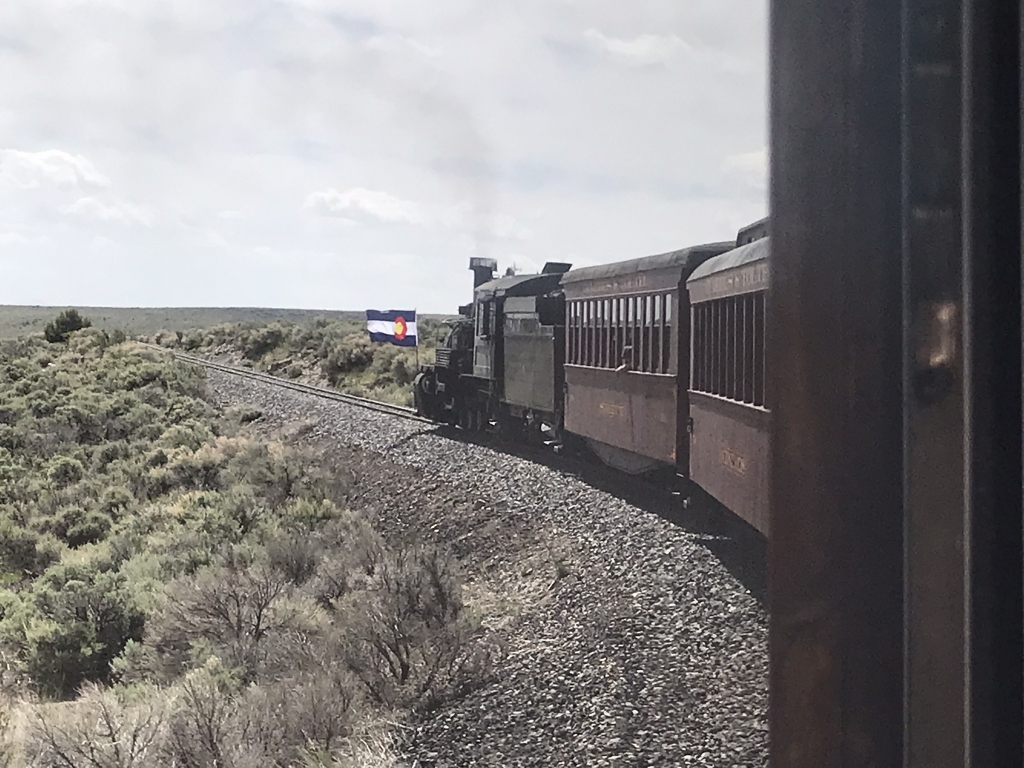
40 minutes after departure.
The train passed by many landmarks with their own little interesting backstories, and the terrain quickly became less flat and more mountainous as the train slowly chugged westward.
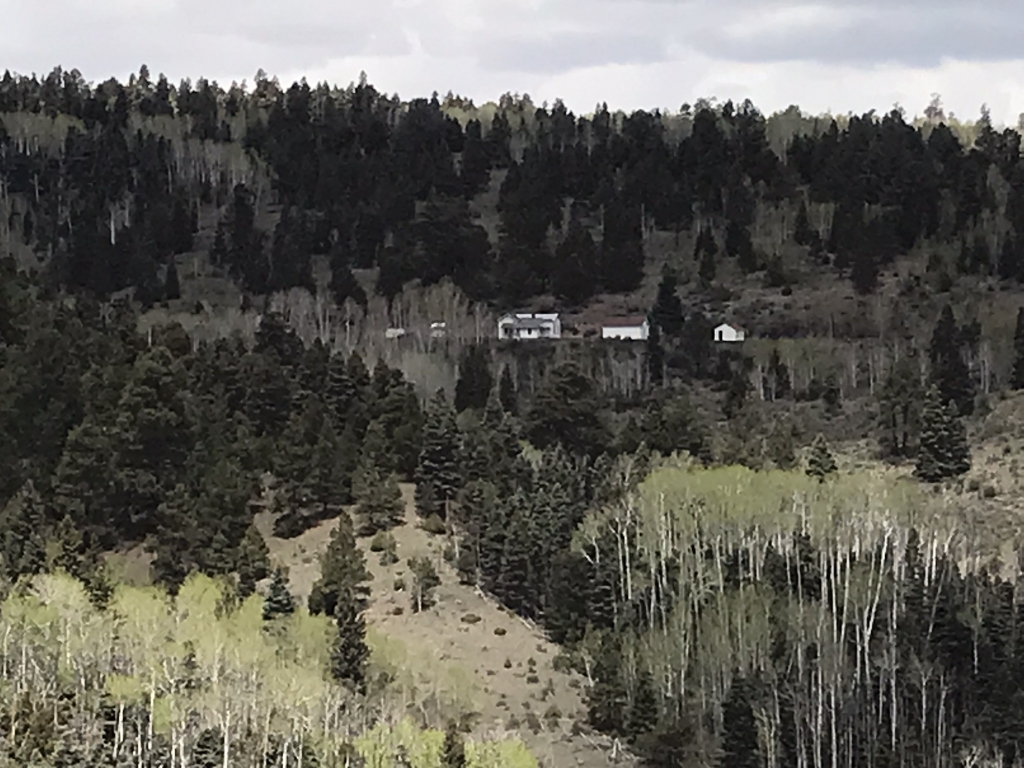
On the other side of this valley, you can see a small cluster of buildings which used to be part of a town called Sublette.
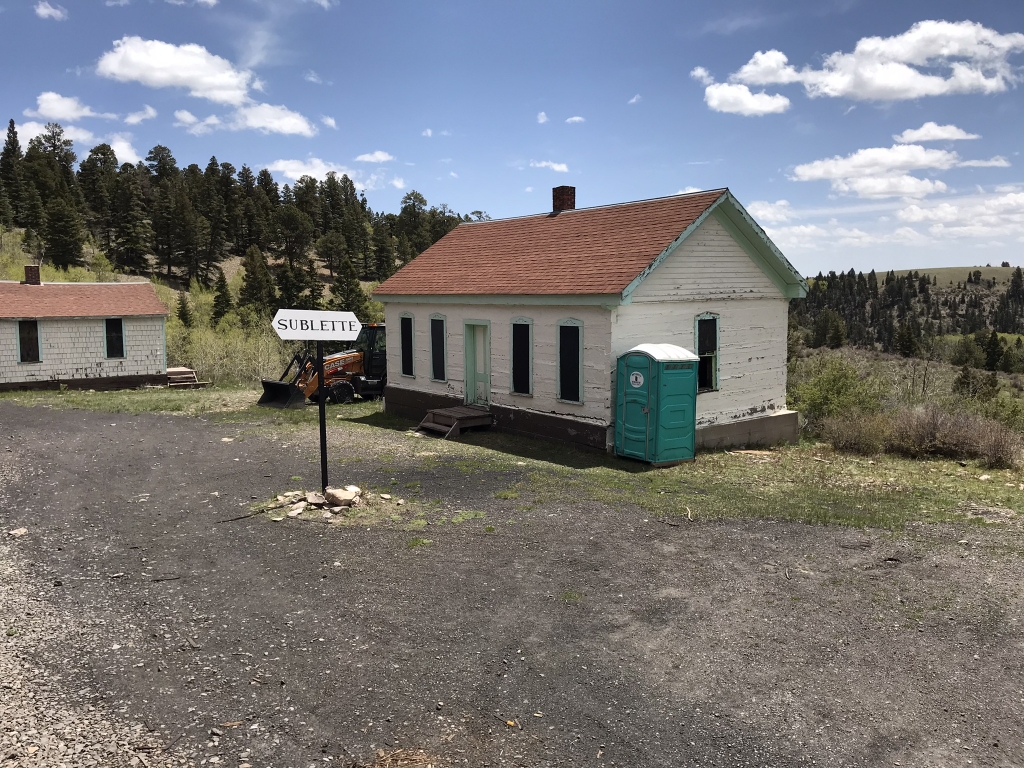
Sublette, New Mexico used to be a town where railway workers lived. No one lives here anymore, though.
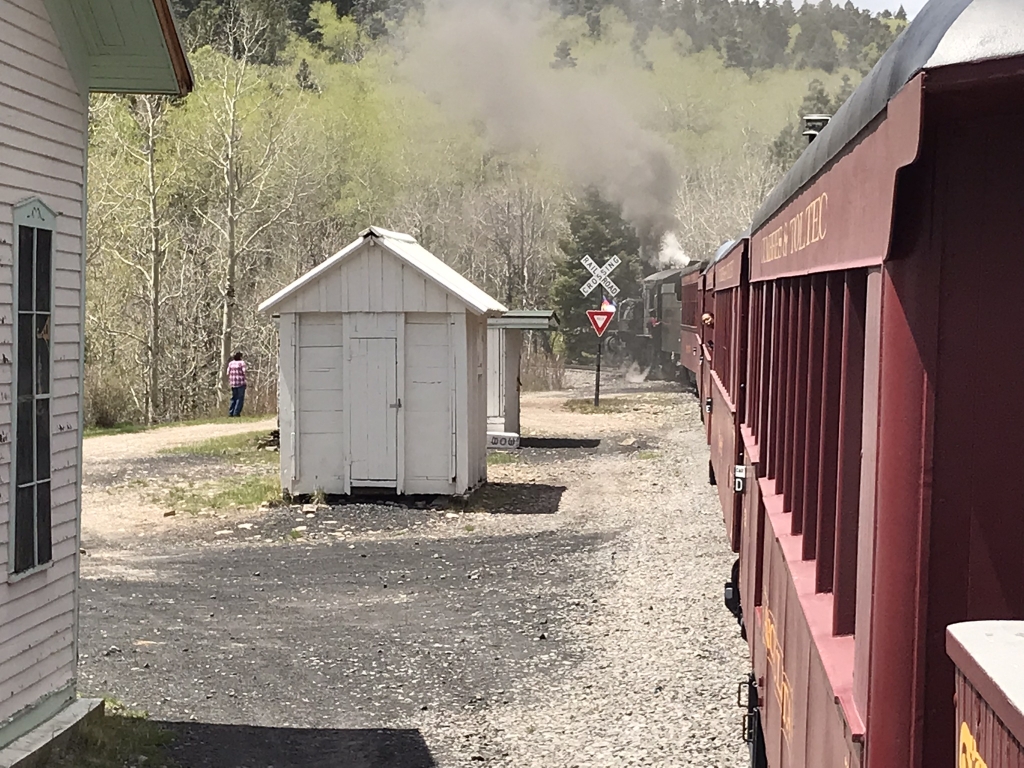
To give you an idea of how fast steam engines move, this is 25 miles from Antonito, and the train has been moving for an hour and 50 minutes. That's not including, of course, the ten minutes the train was broken down.
After Sublette the view got real good.
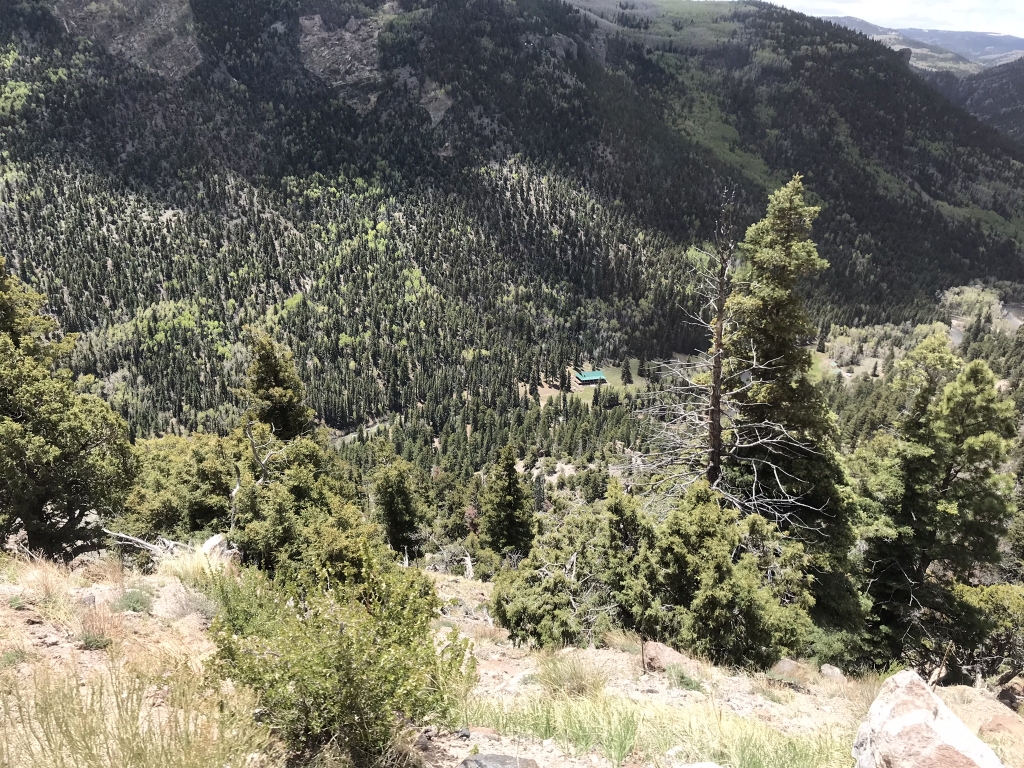
Yeah, someone's rather large house is way down there in that valley. Probably someone with a lot of money who wants to get away from everyone.
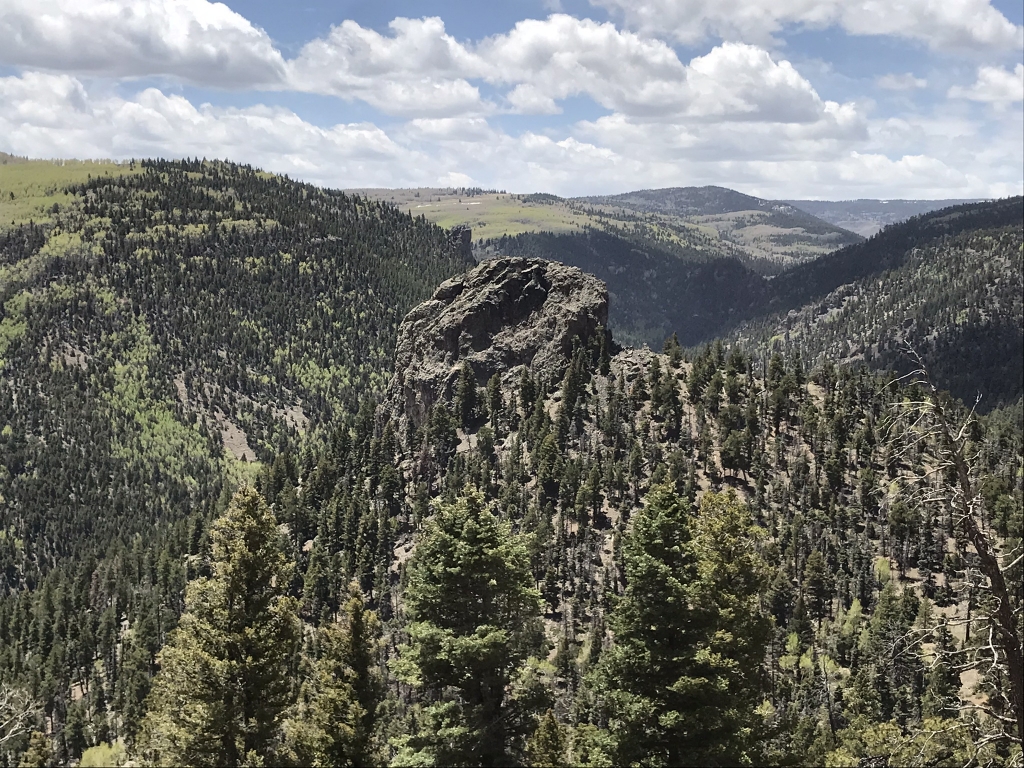
Shortly after 1pm the train reached our halfway point at Osier, Colorado. Here we were going to stop for lunch at the cafeteria, but first the train had to change engines.

The engine disconnecting from our train. The other half of this journey required a bigger and more powerful engine, and so it's here at Osier where the two trains, both stopped here and headed in opposite directions, swap engines.
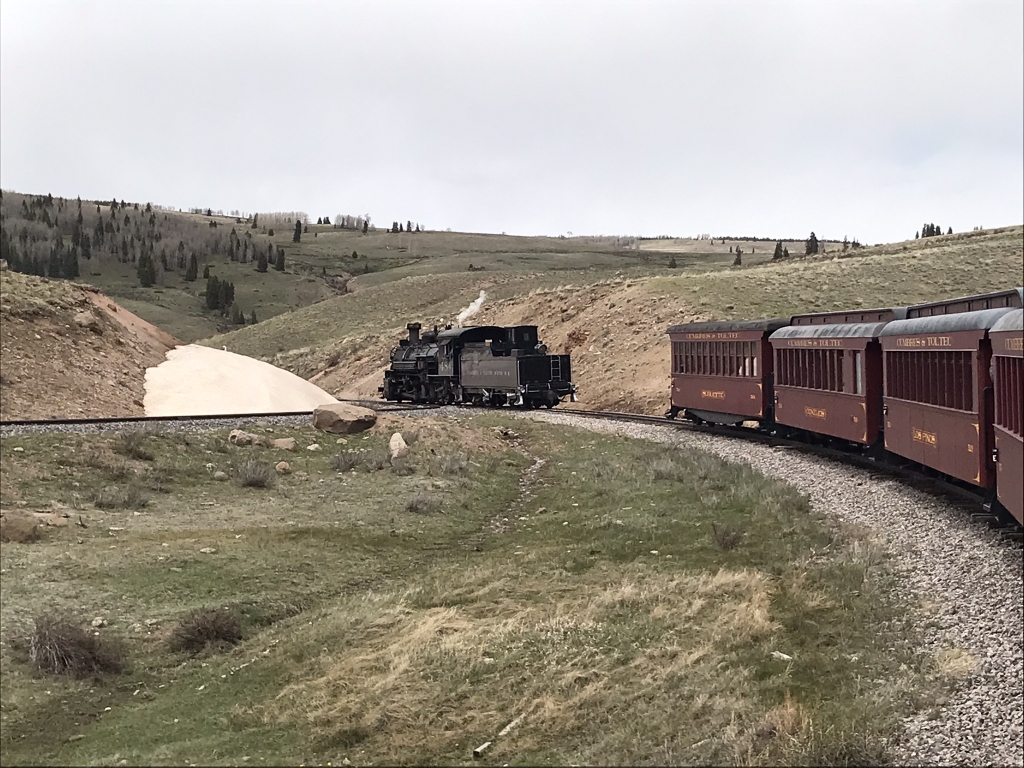
The bigger engine from the other train, the one headed toward Antonito, which would then get the smaller engine from our train.
Osier is another town that was once a home for railway workers. It's no longer inhabited, but there is a large cafeteria here for tourists on the Cumbres & Toltec.
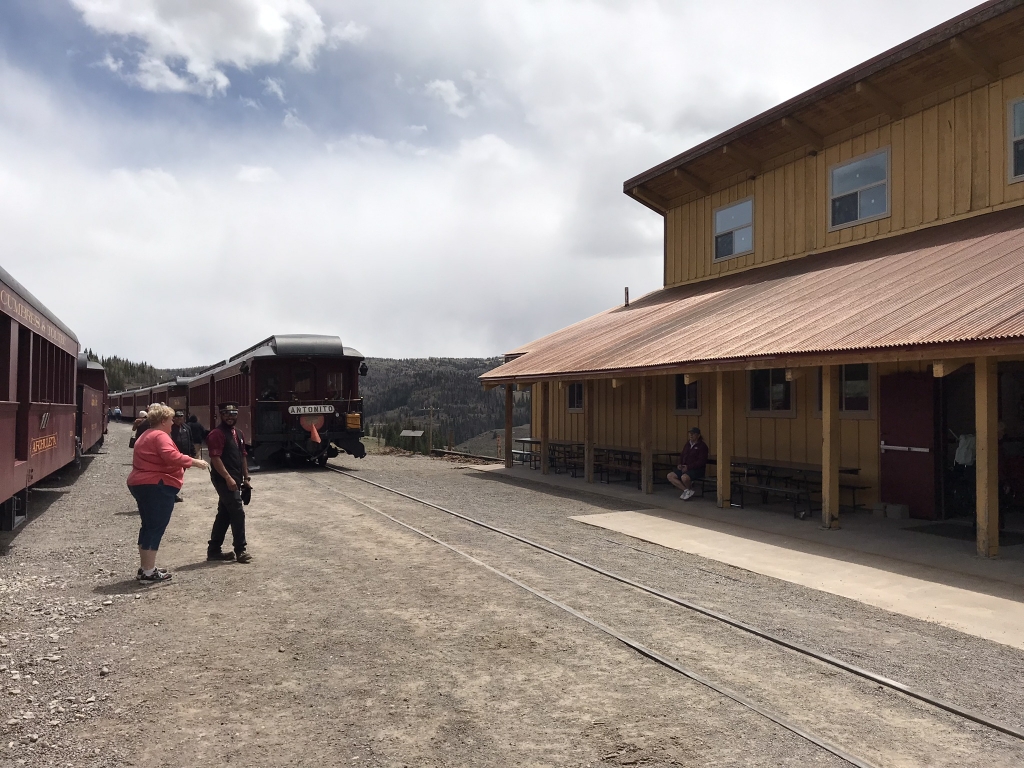
The cafeteria. It's the kind of place where you pick up a tray and walk down buffet lines. The food here was pretty good; I had some roast chicken, as well as some mashed potatoes with green chile sauce.
The stop at Osier was about an hour. After lunch I walked around and looked at some of the buildings which had been preserved as museums.
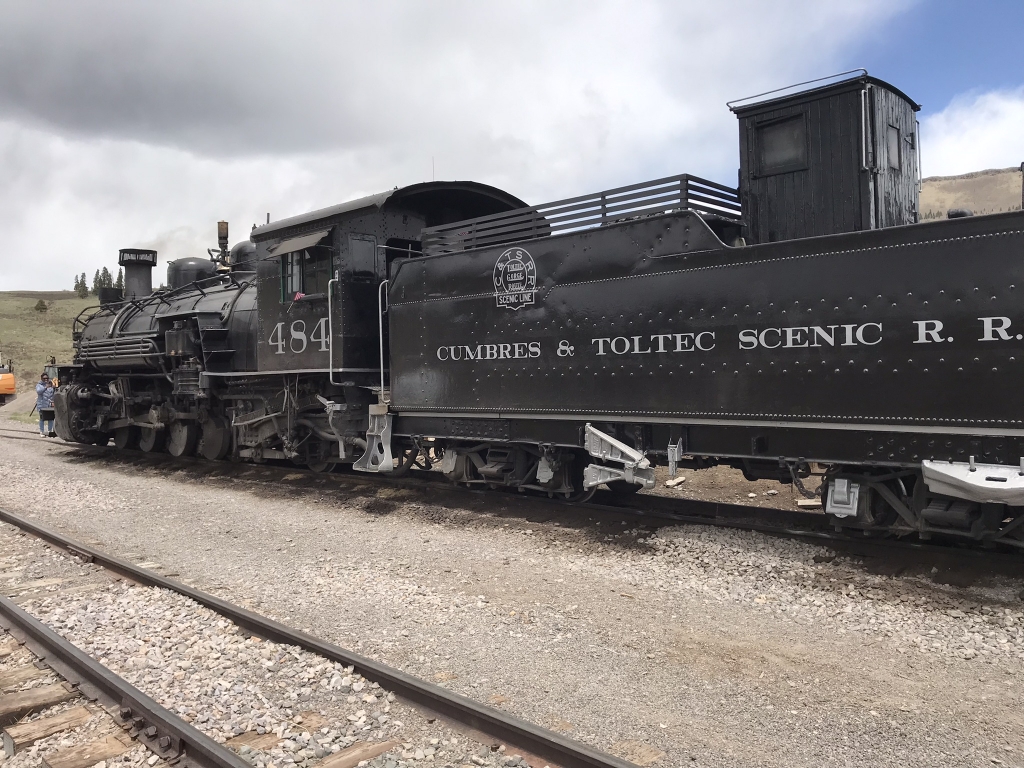
First, though, here's the big engine that was going to pull our train the rest of the way to Chama.
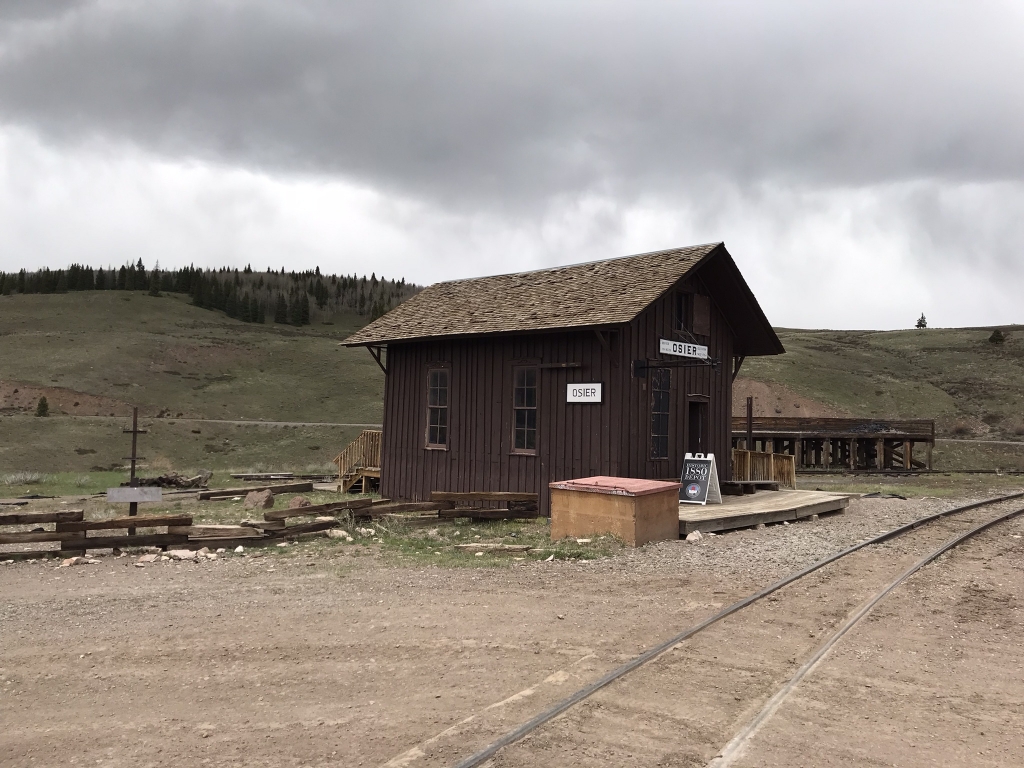
This little shack used to be the depot for the railroad. You can walk inside and look around.
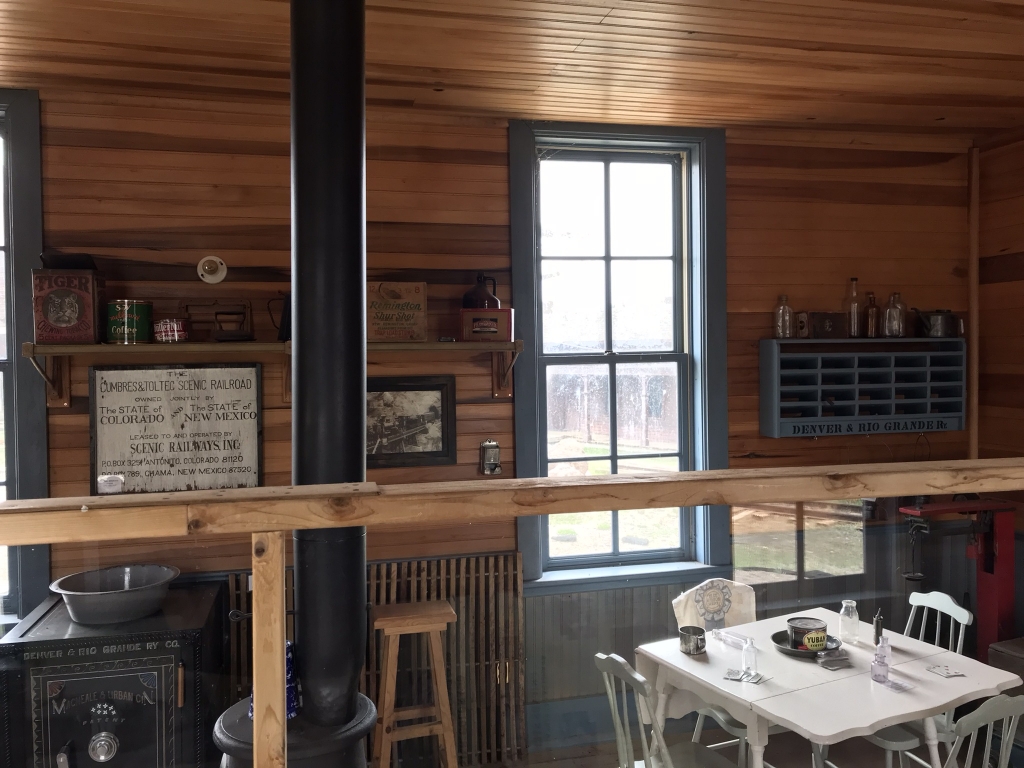
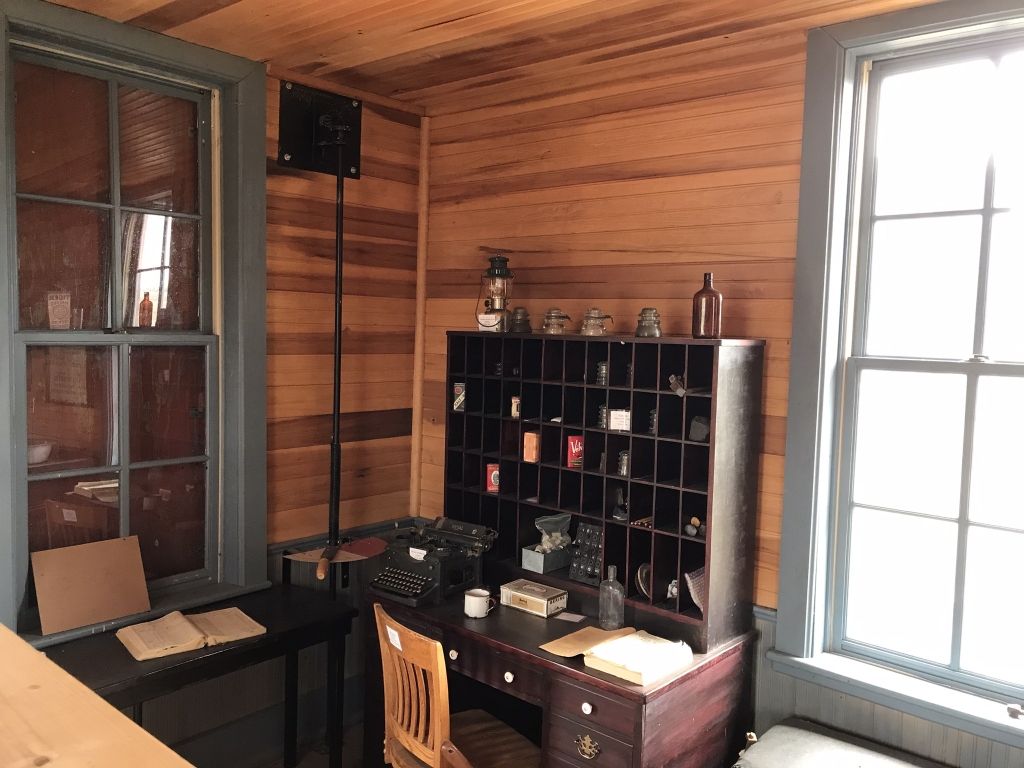
They've kept most of the inside of the depot preserved to look as it did in the late 1800s.
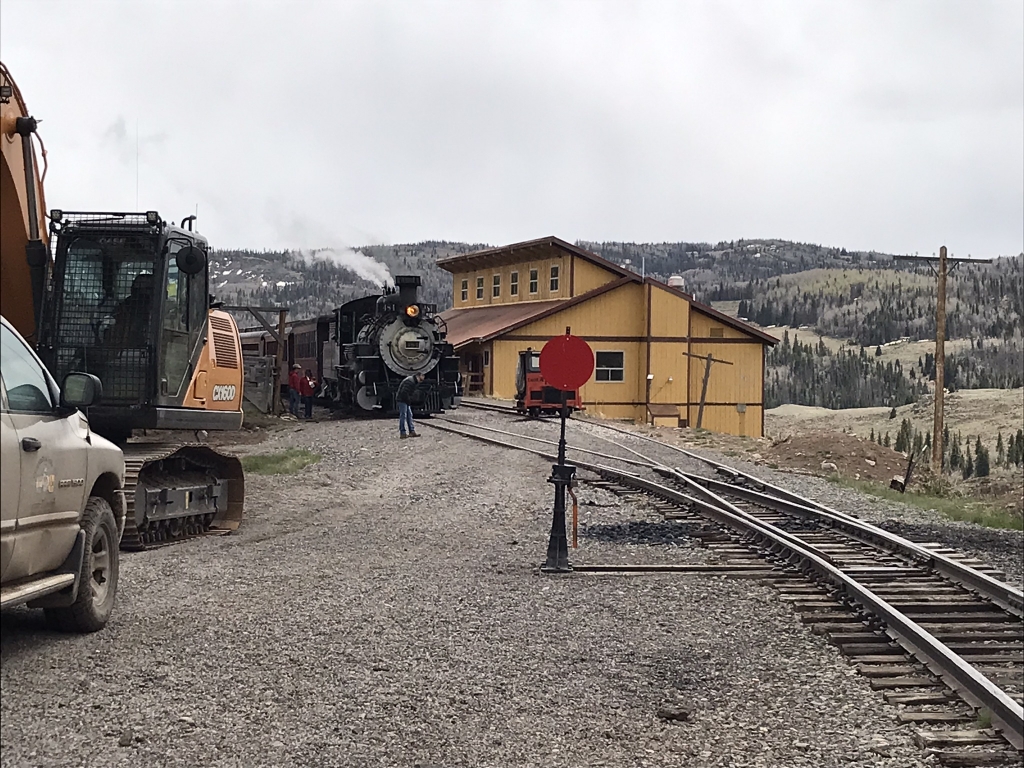
It was about time to leave. Here's one last look at our train parked in front of the cafeteria.
After the train left Osier, I was a bit sleepy. After getting Coors Light from the concession car, I began to wake back up.
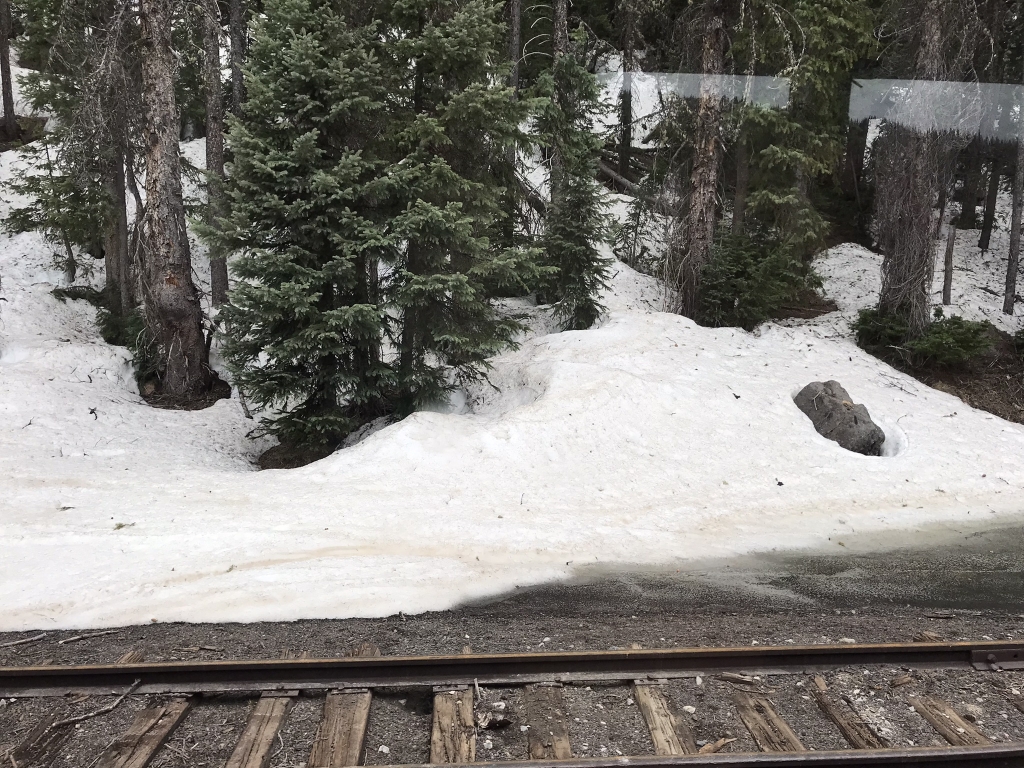
Yes, snow, in the last weekend of May! We're pretty high up in the mountains here where it's still cold enough for snow this late in the year. How high up are we? We're about to find out.
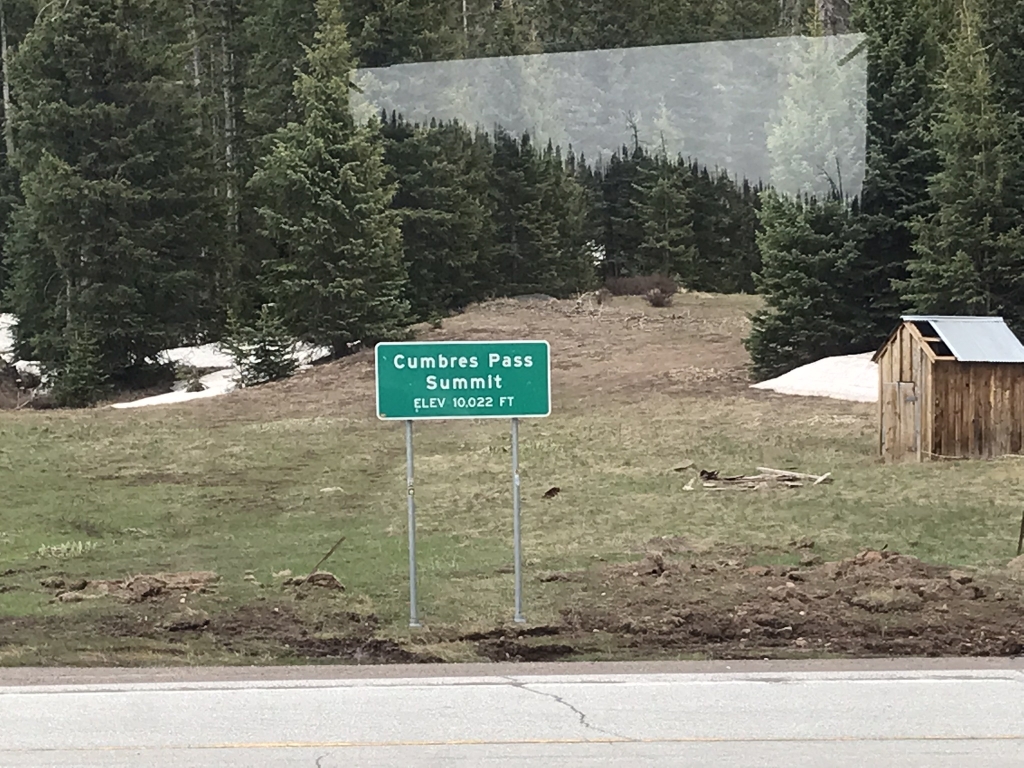
This is the highest point on the railroad. After this it's all downhill from here.
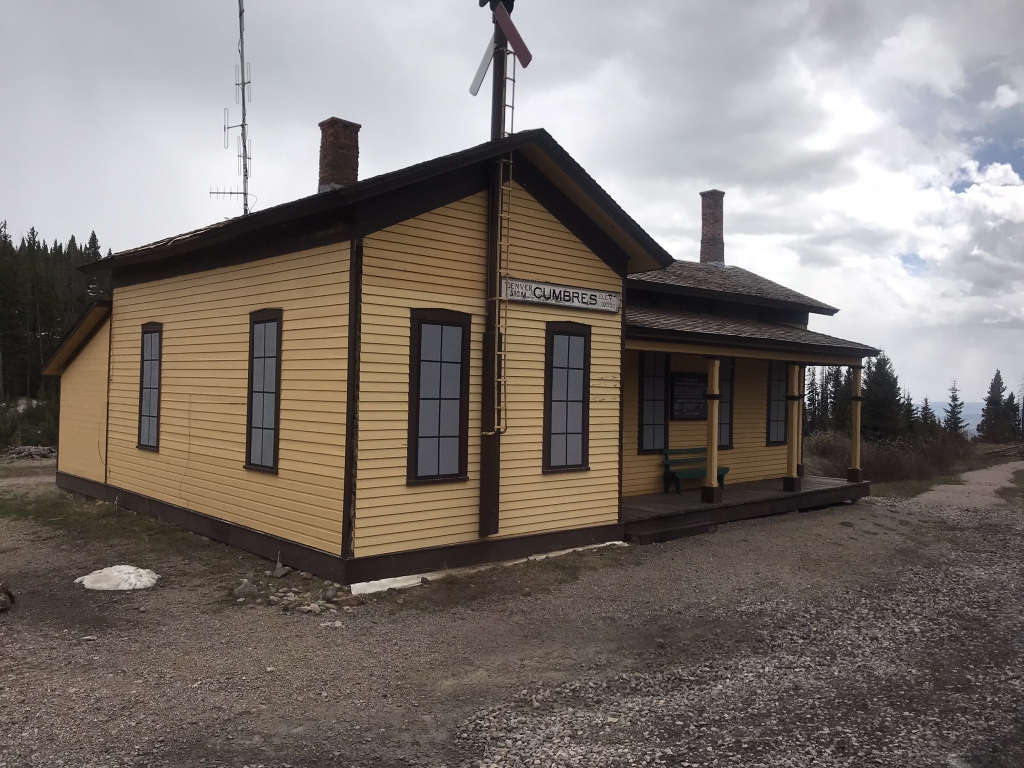
Cumbres, Colorado is very close to the end of the line. Some people stepped off here and rode a bus back. There was still more than an hour left.
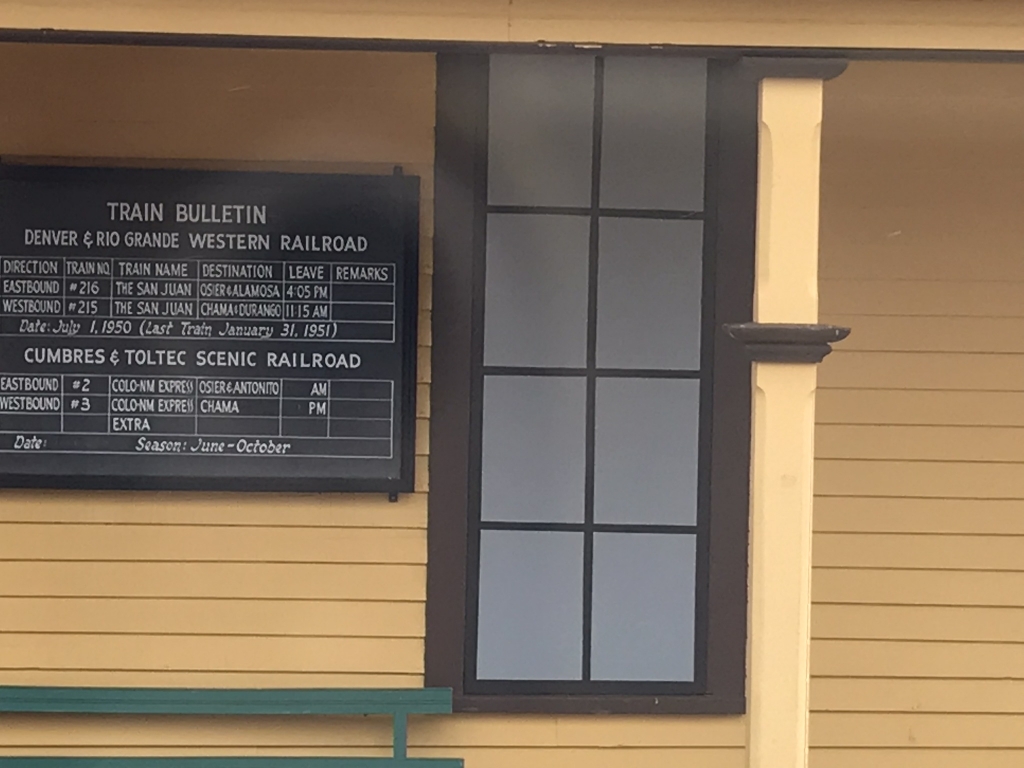
Check out that sign on the old Cumbres depot. The last Denver & Rio Grande Western train left this station on January 31, 1951.
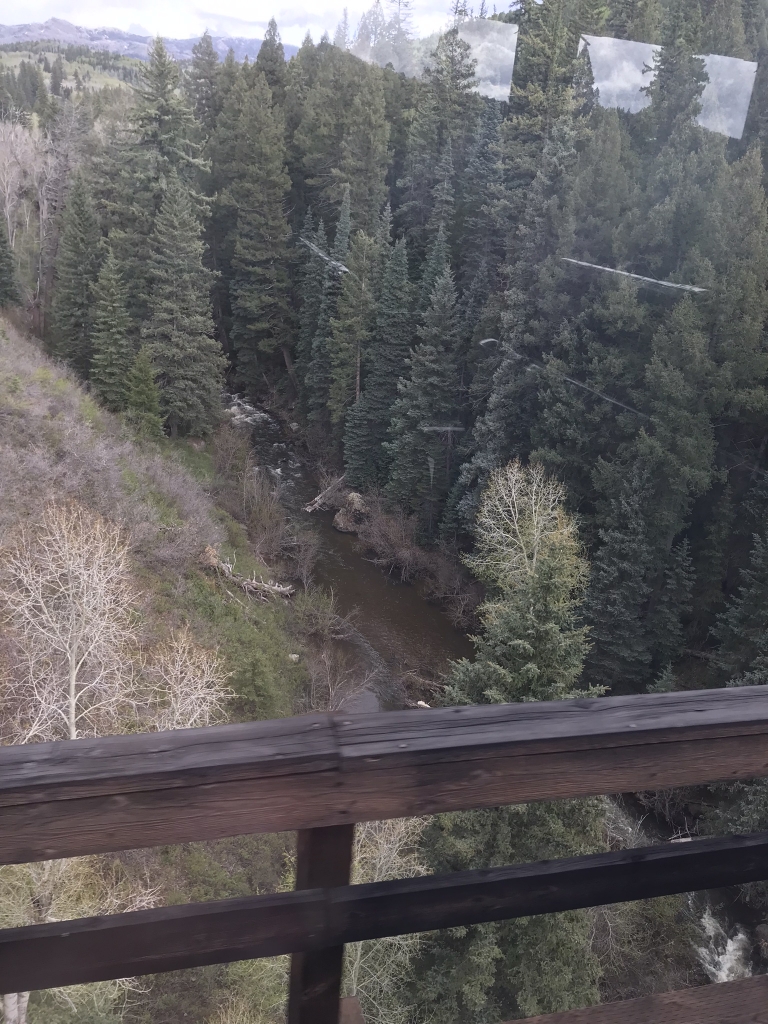
Wolf Creek seen from 100 feet above, as the train passes over the Lobato Trestle, the second-highest bridge on the line.
As the train did its final approach, the crew had to put the brakes on as it went downhill. This filled the air with the smell of burning rubber. As we got closer to Chama, I saw people outside waving and taking pictures, and I'm pretty sure it was the same people who were doing the same thing that morning as we left Antonito. The train finally chugged into Chama around 4:45pm.
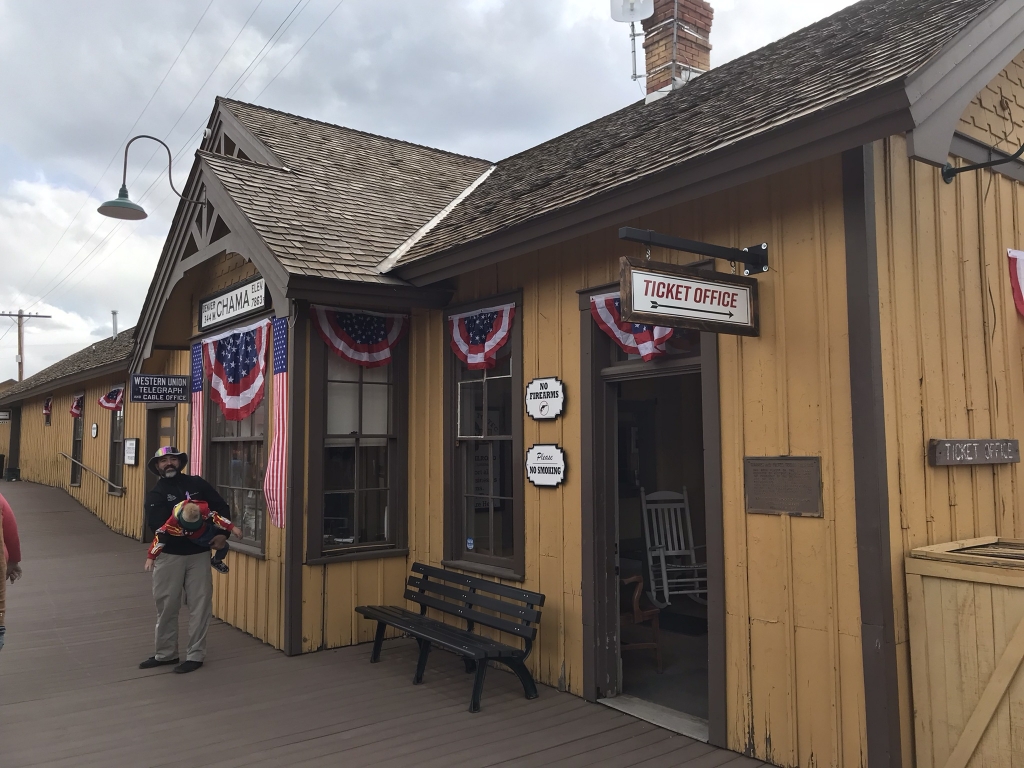
Chama station, the end of the line.
I really enjoyed that ride. The view of the mountains and valleys was incredible, the history you learn is interesting, the food at the cafeteria was great, and of course there's the novelty of riding in an old train pulled by a steam engine.
And now, it was on to my next destination, where I would be spending two nights: Durango, Colorado. It was an almost-two-hour drive to there from Chama. On the way I stopped to get coffee from a gas station in a town called Pagosa Springs, and I made a mental note to return to that town on the way back because it looked like there was a lot more there.
Durango is in an area called the Four Corners. You've probably heard of the Four Corners monument, on the spot where the four corners of Colorado, New Mexico, Arizona, and Utah meet. The name "Four Corners" also refers to the general area surrounding that spot, where people live. There aren't any cities, in fact there's mostly only small towns with four-digit populations and less, with only Farmington, NM and Durango, CO breaking the five digits. But there are so many of these towns, so close to each other, that it's a much more populated area than desolate eastern New Mexico where I live
Probably because it takes in a lot of tourists, Durango is a real happening town with a lot of cool local restaurants and bars. It's also a college town, the home of the rather small Fort Lewis College. And get this, there's actually a hostel there, called the Junction. While I was mostly done with hostels by this time, I had to spend a couple nights there.
I checked into the hostel and stored my stuff in one of the lockers provided. Now, time to hit the town. It was small enough that walking was adequate for the rest of this stay, and I wouldn't need my car again until heading home Monday morning.
Durango lies on the Animas River, which cuts right through it. The hostel is north of the river, while downtown is south. Just over the bridge, on the south bank of the river, you can find the Animas Brewing Company. This is a brewpub that also serves food. This is where I got dinner that night, a field salad which was great but was a little too loaded with blue cheese. And of course I had one of their beers, a Riverside Kölsch, which tasted good but was a bit too flat.
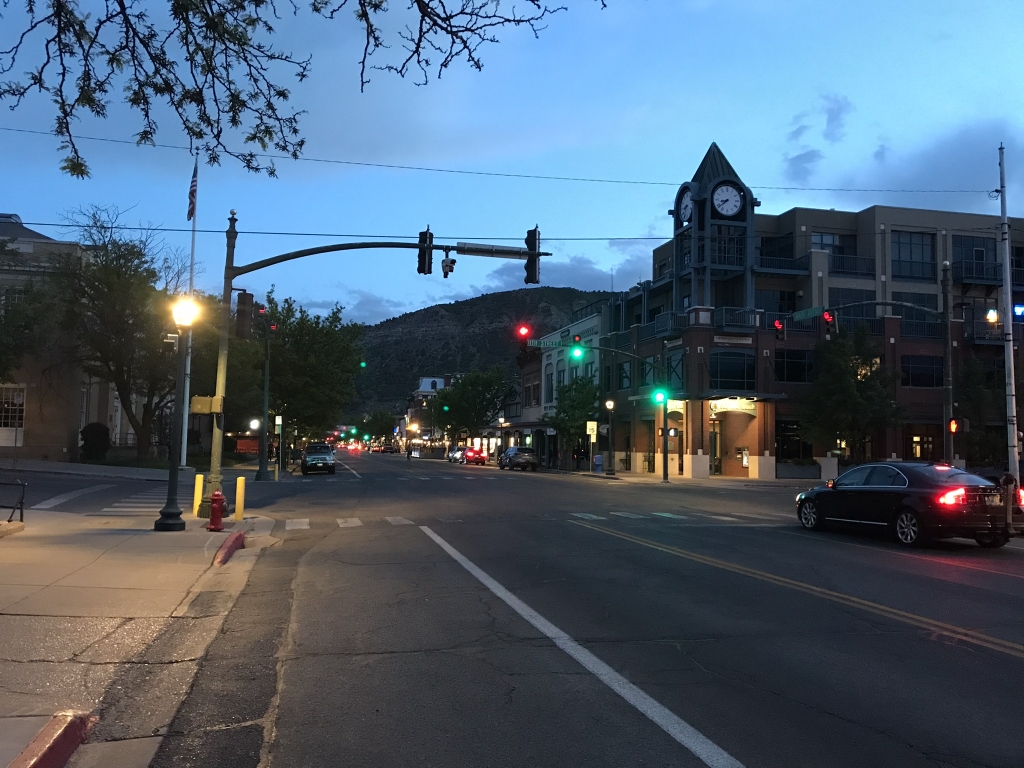
The intersection of 11th & Main in Durango. This town, and the whole Four Corners really, is a real hidden gem that I didn't know existed until this year.
In downtown Durango I stopped at the Starlight Lounge and had a couple of Colorado brews. New Belgium Mountain Time lager tasted great. Ska Brewing Pinstripe amber ale was also great, but unsurprisingly a little bitter.
I just had to have one more pint. Next door to the Starlight Lounge I found El Moro, where amazingly enough they were serving Stiegl Goldbräu! That's an Austrian beer I used to drink a lot at Austrian ski areas. And remember the time I took that tour of the Stiegl brewery in Salzburg?
After the Stiegl, I couldn't stay out drinking anymore, since I had a train to catch the next morning. Back to the hostel...
Sunday, May 26, 2024
The day's train ride was scheduled to leave at 8:15. I woke up early enough to walk downtown and find something for breakfast. The Durango Diner was the best place to stop for that, and I had mini huevos rancheros. I'll recommend this restaurant.
The railway I was about to ride was called Durango & Silverton Narrow Gauge Railroad. This one isn't nearly as long as the previous day's Cumbres & Toltec so this would be a round trip, including a two-hour stop in Silverton, at the other end of the line. When you make reservations for this train, you have a choice between a train with a steam or diesel engine. I went with the diesel, since it didn't matter all that much to me and I was mostly there for the view.
The train took a little while to get going, and for the first half hour or so, the ride seemed not so scenic as the one I was on the day before. The only scenery was the various public parks and such on the outskirts of Durango. But a little more than an hour into the ride, it became much more scenic than anything on the other ride!
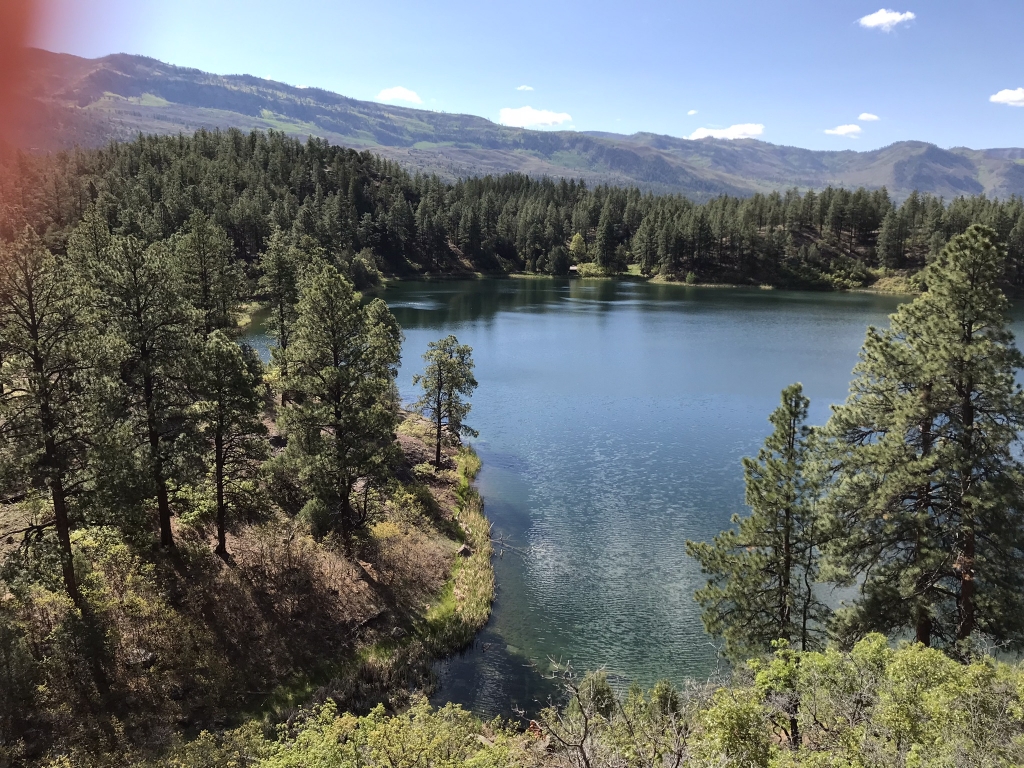
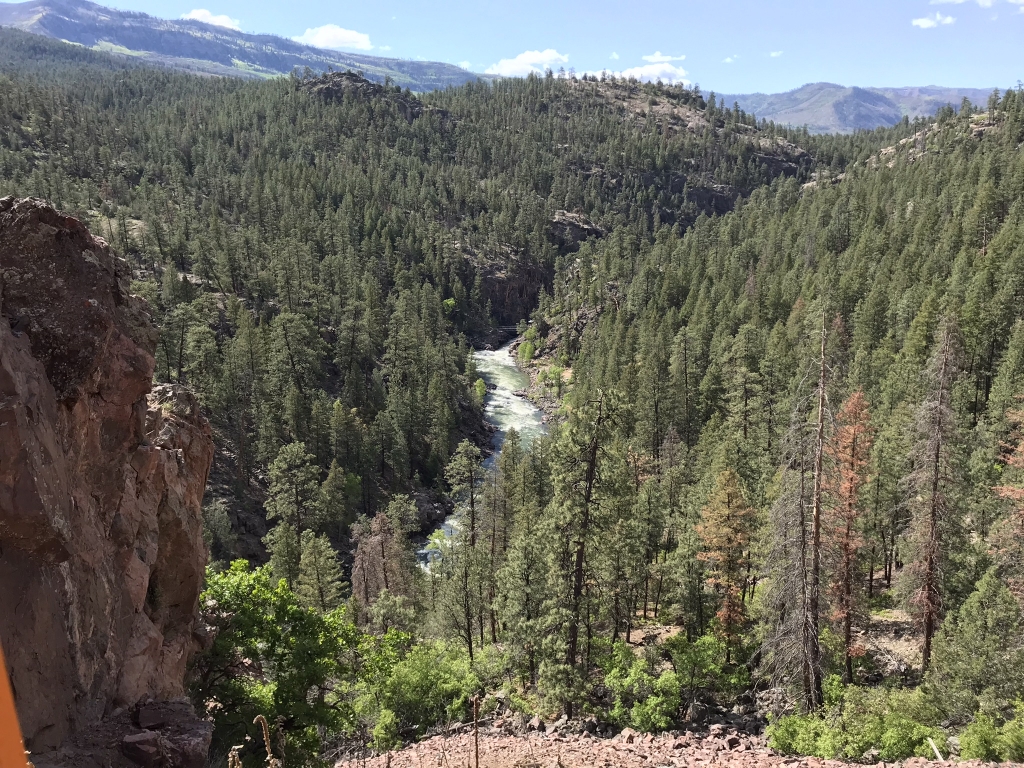
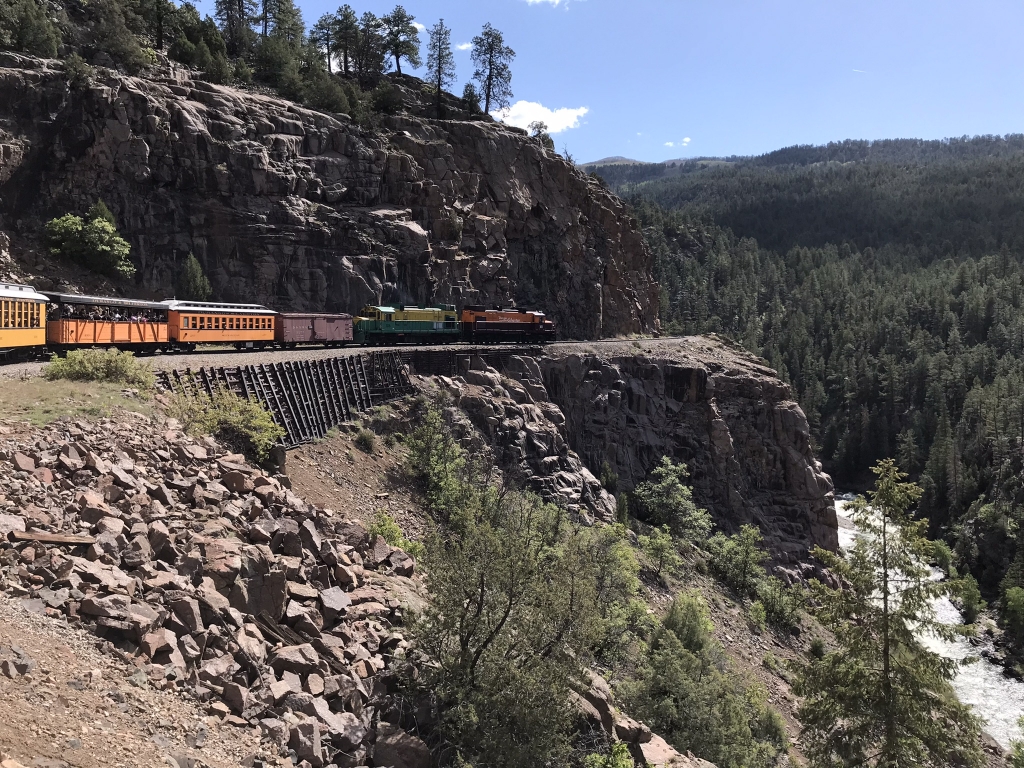
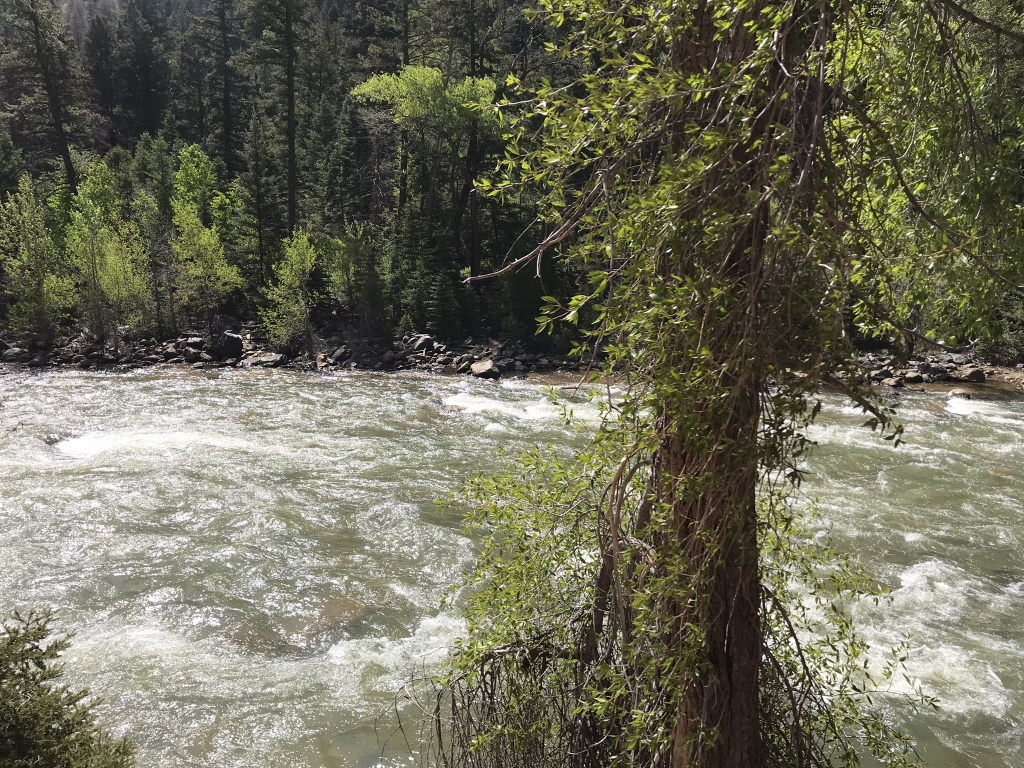
The Animas River, which the train follows for its entire route.
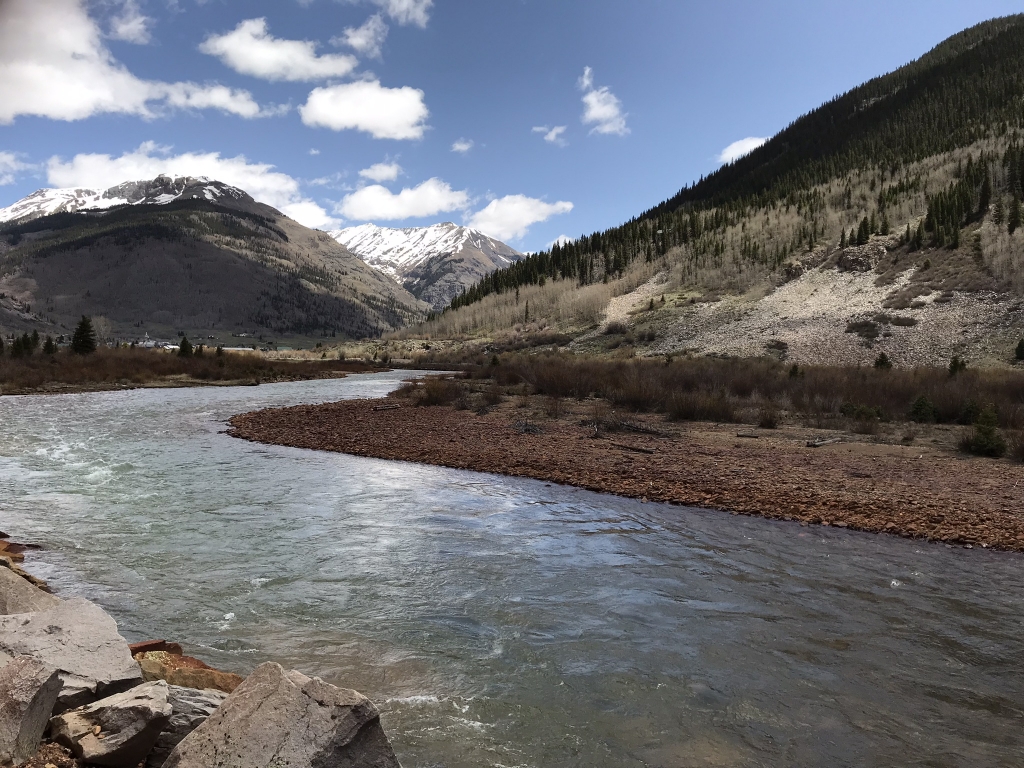
Near the end of the ride, Silverton is barely visible off in the distance.
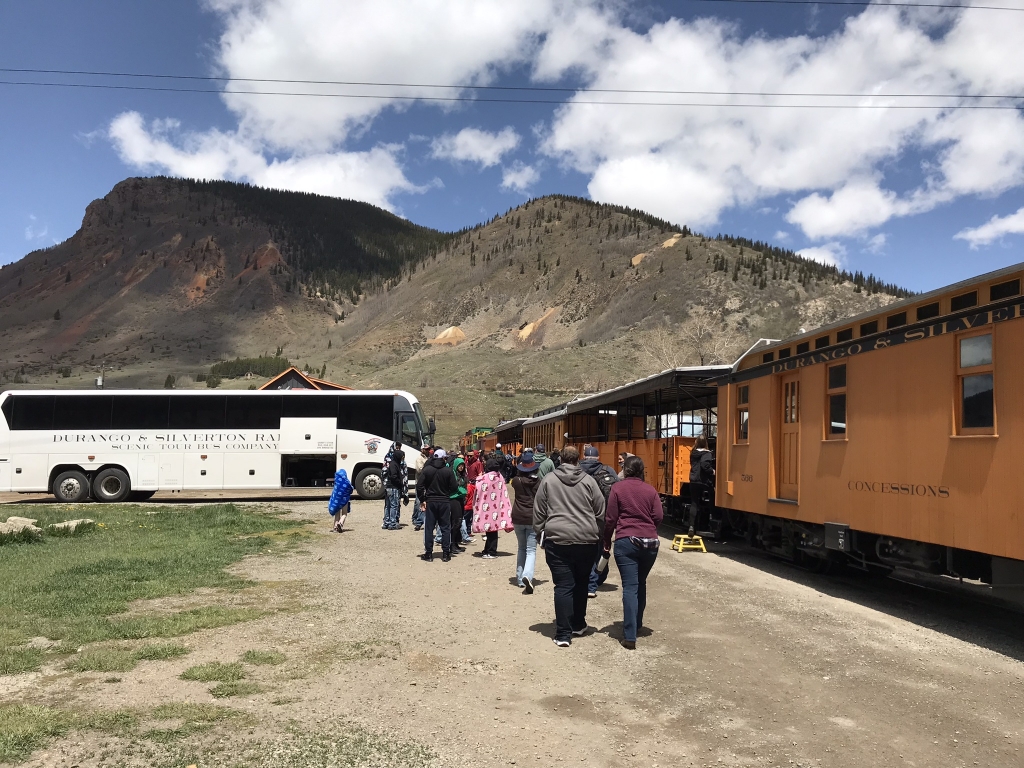
After stepping off the train in Silverton.
The train pulled into Silverton just before noon. Silverton is a really tiny town, isolated in a difficult-to-reach spot in the mountains. It used to be a silver mining town, hence its name, but with the silver mines long since closed, its economy is now based on tourism. They've really preserved its "Old West" appearance.
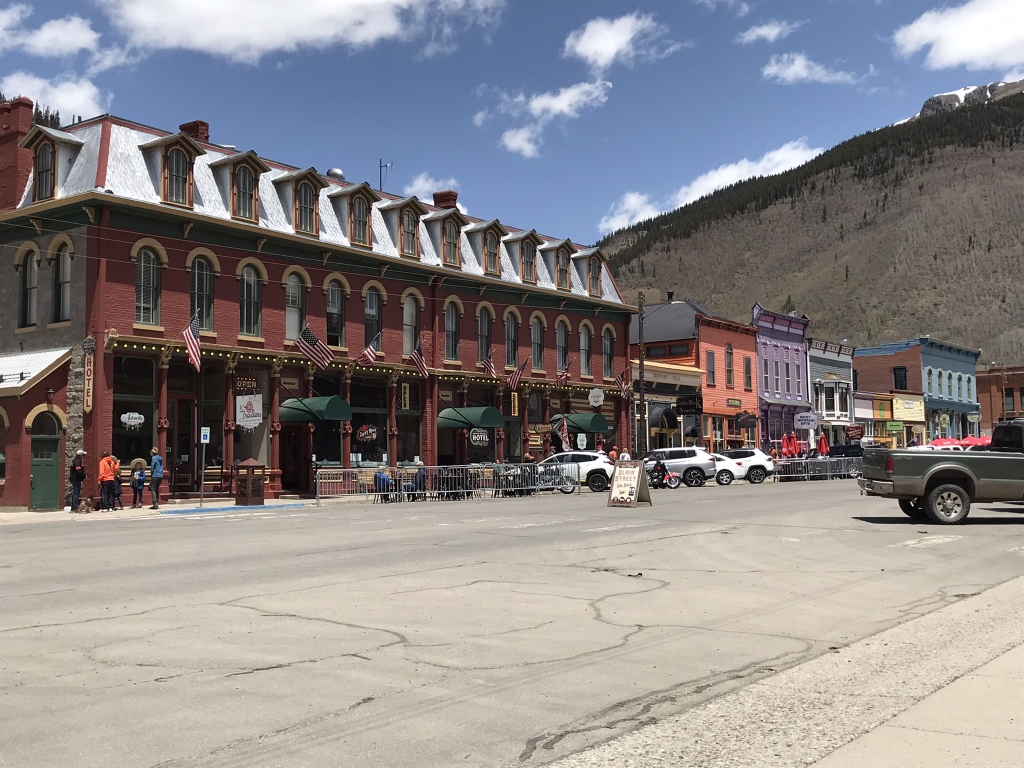
This is a historic building, the Grand Imperial Hotel. It's still an operating hotel, with the first floor occupied by restaurants and bars.
On another street, I found a restaurant that used to be a brothel back in the Old West days. It was named the Shady Lady Saloon. For lunch I got a "classic brat" with fried cauliflower, along with a glass of Stella Artois.
Walking around Greene Street, there were a lot of souvenir shops. From one of these, I bought a pint glass.

Silverton's City Hall, which was built in 1908.
There are also a few breweries there in Silverton. At the Avalanche Brewing Company I had a Fischer Pilsner and I liked it.
We only had about two hours or so to look around Silverton. Before heading back to the train I got an Americano from Elevated Coffee.
The ride back was rather uneventful, and like the day before, I dozed off for a while after the train started moving. It was another three or so hours before I was back in Durango.
From a brochure I got on the train, I found out that the Denver & Rio Grande Western's founders wanted their railroad to stretch all the way down to Mexico, which is why they named Durango after a city in Mexico.
There was a little train museum next to the rail yard which I walked through for a few minutes.
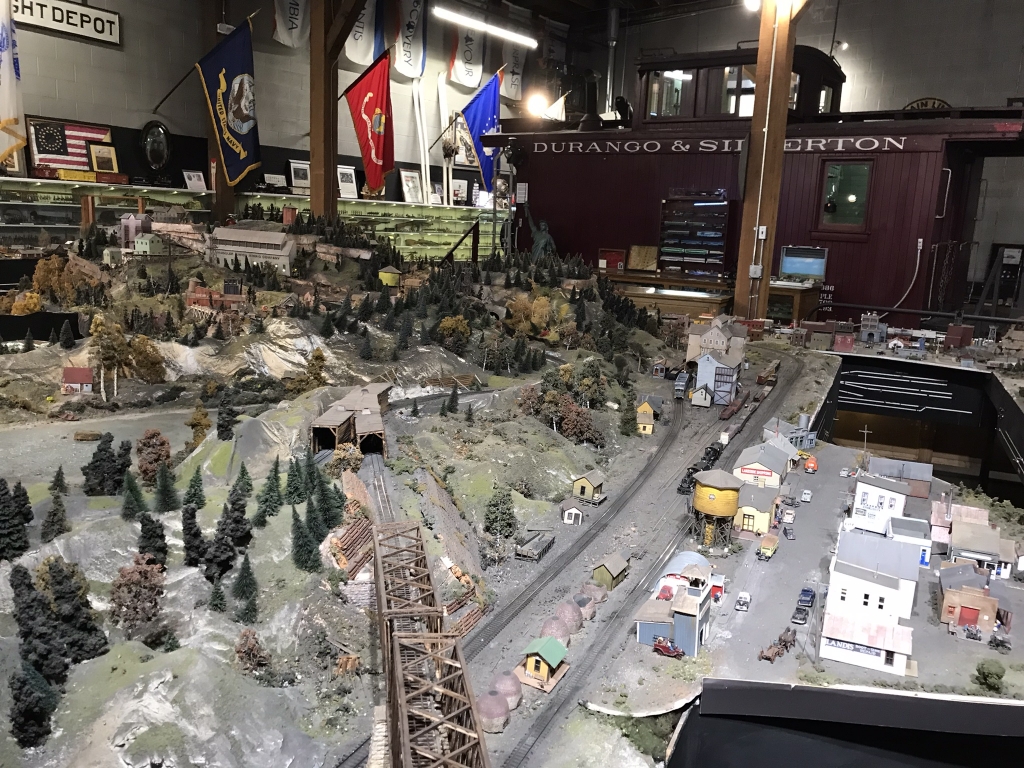
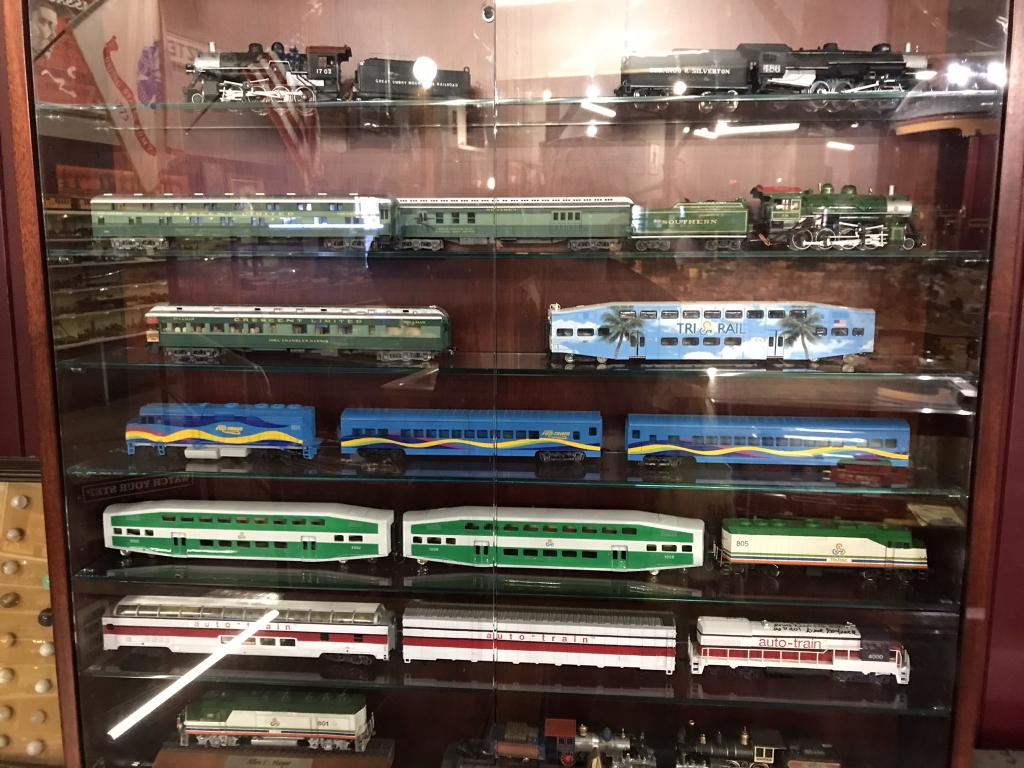
Models of passenger rail cars from throughout the years. Those two-level octagonal cars, like the one that says "TRI RAIL" on it, are commonly used on commuter and regional rail systems all over North America, such as the New Mexico Rail Runner Express in Albuquerque and Santa Fe, and SunRail in Orlando, FL.
Now that we're done with the train rides, I've got a really old photo I need to share. Both of these narrow-gauge lines were once part of the now-defunct Denver & Rio Grande Western Railway. That name seemed a little familiar, and as I put together this blog I looked through my photo archives for where I thought I'd seen it before.
This is a photo from Knott's Berry Farm, an amusement park in Los Angeles, way, way back on May 27, 2006! One more day and this would've been exactly 18 years earlier! Their "Calico Railroad" uses old D&RGWR trains.
Back in downtown Durango I found a place that made their own cider: Eso Terra Ciderworks. This place really needed more customers, because they served some great cider and I seemed to be the only customer in there. I had a glass of one cider called Brown Snout, which was good, and another called Quafftide, which was even better. The woman behind the bar told me their cider has no added sugar. They also serve food and I had some kind of salad for dinner.
No added sugar...so does that mean that other ciders do have added sugar? Looking at a 12-ounce bottle of Strongbow in my fridge, I see now that it has 16g of added sugar.
I learned a lot about cider here, with the woman behind the bar explaining a lot. Cider isn't made from the same kind of apples that we get from grocery stores. Cider apples aren't nearly as sweet. This part of Colorado has for a long time been big on apple growing, and during the Prohibition years a century ago, this isolated corner of the country was still producing cider since this area was difficult for the authorities to reach.
I made one more stop that night, the Office Pub at Strater Hotel. To drink, I got an Irish Coffee, and they made it the right way, without Bailey's. Finally I had one more beer, a Ska Brewing Mexican Logger. For the whole time I was there, there was a musician, a man playing a ukulele and singing a wide spectrum of songs like "Sitting On The Dock Of The Bay," "Have You Ever Seen The Rain," "Billie Jean," and "Oops I Did It Again."
Monday, May 27, 2024
Even though there was nothing left to do on this trip besides drive home, there's one more thing I have to report. On the way back I drove through a southern Colorado town called Pagosa Springs. I'd never known this place as anything but just another label on a map, but it turns out it's a really nice vacation spot! I wanted some coffee so I parked at a public parking lot by the San Juan River, and walked down the steps to a great coffee shop, Root House. After getting my coffee, and buying some coffee beans to take home, I had to walk around a little and take in the atmosphere.
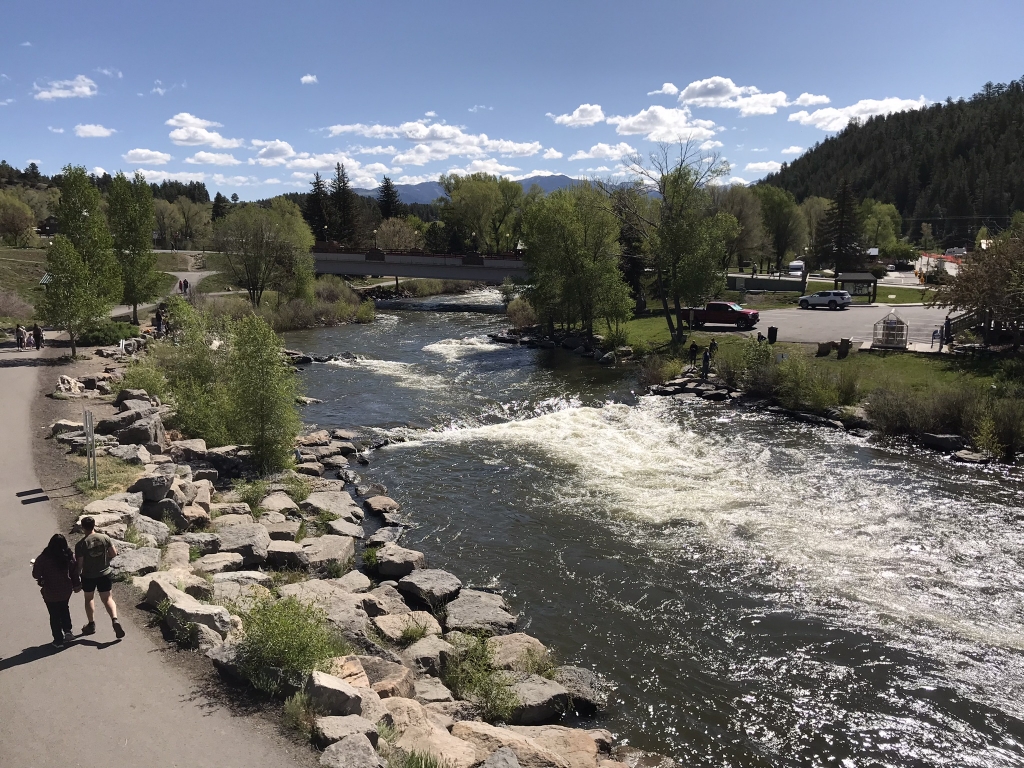
The San Juan River, with a scenic river walk along the side. On the other side of the river were some resort hotels. If I end up living close enough, I may be taking some vacations here.
